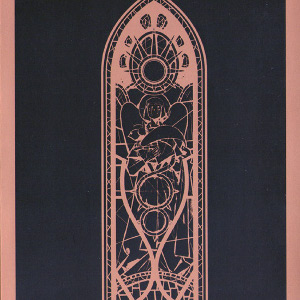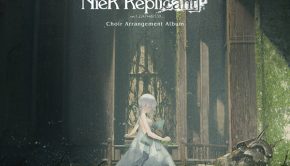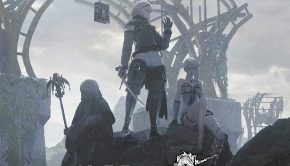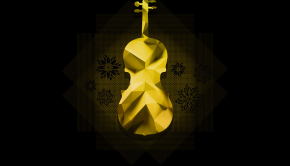Drakengard Chips Music
 |
Album Title: Drakengard Chips Music (Drag-on Dragoon Chips Music) |
| Record Label: Square Enix |
|
| Catalog No.: TGCS-7750 |
|
| Release Date: December 19, 2013 |
|
| Purchase: Buy at Amazon.co.jp |
Overview
For the release of Drakengard 3 (Drag-on Dragoon 3 in Japan), Square Enix released a 10th anniversary series box which included Drakengard Chips Music (Drag-on Dragoon Chips Music), a one-disc chiptune demake album of selections of the music of the series leading up to the release of Drakengard 3. Fairly recognizable themes were chosen from each game, and the remixes do their best of capturing all of the original elements and also choosing the right sounds to emulate the original pieces. As someone curious about the series as a whole, I eagerly picked up this box. However, the album is not for sale separate from the pricey 10th anniversary box, though fans of the series aren’t necessarily missing too much.
Body
The first portion of the album covers Drakengard (Drag-on Dragoon), a score well known for its heavy use of short orchestral samples from classical composers such as Mozart, Debussy, Wagner, and many more. There samples are so short as to be unrecognizable, and often no real melodies in the score, just an effective atmosphere of madness and chaos. It is interesting that in the transition to chiptune the pieces lose the sense of sounding like samples from other work masterfully sewn together. Instead, they now simply sound like choppy and repetitive compositions. Thus a few tracks here like “First Chapter – Sky” and “Thirteenth Chapter – Closing” don’t quite work as well due to the nature of their originals.
The ones that work better mostly have some melodic drive. “Weapon Select” and “Seere’s Prayer – Sky” make good transitions, and “Fourth Chapter – Ground” is also fairly enjoyable because of its strong bass and progression. “Route B Staff Roll – Exhausted” is also quite good, though it is a bit of a shame that they chose to have a synth replace the vocal line, rather than present a filtered version of the vocals as was done in “The Legend of Nier: 8-bit Heroes” from the Nier arrange album.
The next set is for Drakengard 2 (Drag-on Dragoon 2), which was a more straightforward but nevertheless fantastic score that evoked Romantic and Classical era orchestral pieces with strong melodic lines and atmosphere. The chiptune versions again are very faithful capturing most of the original elements, so there are no real surprises. For the most part they are simply good chiptune transitions. A few work out quite well and stand out, such as the well-paced “Moaning Waterways”, the epic “Final Battle”, and the mournful “Hitori”, but even in these there isn’t much novelty. It’s interesting to note that here “Hitori” seems to work much better without vocals than “Exhausted” did, which is probably due to the nature of the melody and the higher pitched synth chosen.
The last section covers the spin-off title, Nier. Again, no digitized vocals are present here, but instead synths handle the vocal melodies. Again, they are largely simply adequate demakes with no surprises, and a few work better than others. The first few tracks can feel like their sound is a bit too minimal at times, especially “Deep Crimson Foe” and “Snow in Summer” (though this interestingly retains actual strings; a couple of other tracks keep non-chip instruments in the background well). However, “Song of the Ancients – Fate” is suitably epic and pressing, “Ashes of Dreams” has excellent buildup and dynamics, and the opening of “Shadowlord” works wonderfully.
As a bonus, Nobuyoshi Sano’s piano version of “Exhausted” is also present, which plays on the official website for Drag-on Dragoon 3. It starts off very sparse, with lots of reverb and echo while the piano simply plays the melody and a few chords here and there. Many distortions and effects are used for atmospheric effect. Midway through the song kicks into an arrangement close to the “Route B Staff Roll” version, and it should be noted that the accompaniment is not played straight through but is also constructed from samples as the original accompaniment was (so there won’t be any sheet music releasing for this version). It’s an effective version of the theme and a welcome addition to the album.
Summary
For the most part, Drakengard Chips Music consists of straightforward demakes, with some pieces working better than others but none that should be considered bad. It is a bit of a shame that there wasn’t more creative arranging done, but the original large orchestral and vocal pieces are faithfully transcribed into chiptune format with well-chosen sounds. There is a nice amount of variety here since the games’ scores are so different, and the scores are well-represented by their more iconic tracks. On its own it doesn’t merit a purchase of the expensive 10th anniversary set, but anyone who purchased a set probably will not complain about what they received.
Do you agree with the review and score? Let us know in the comments below!
3
Posted on September 12, 2014 by Christopher Huynh. Last modified on March 10, 2016.














